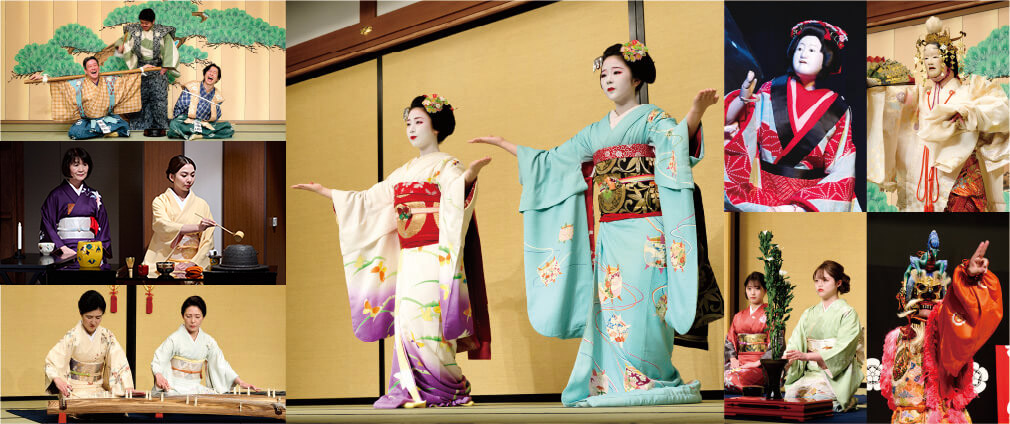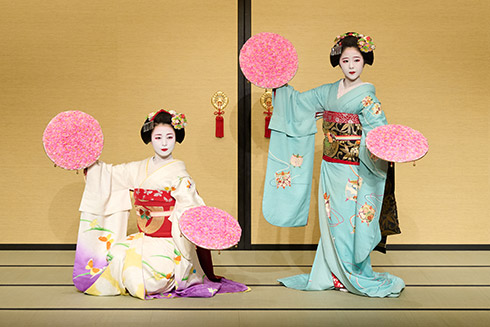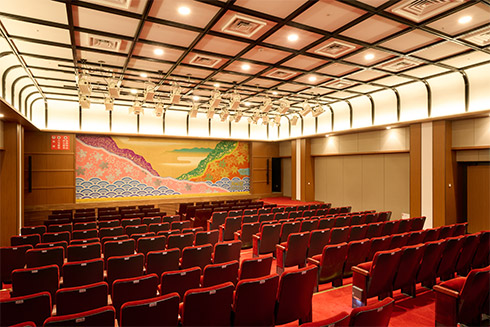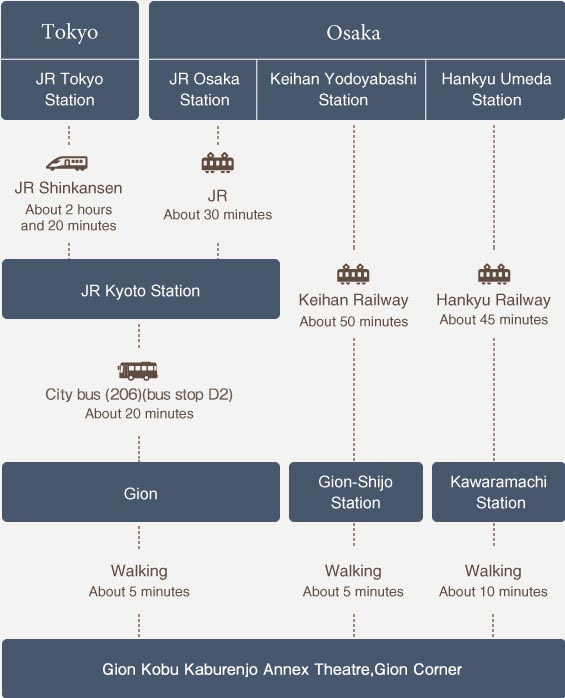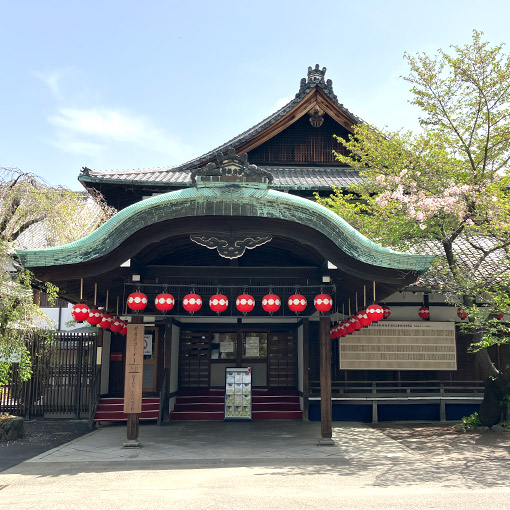Gion Corner: Traditional Arts Performance
This show provides a great opportunity to enjoy seven traditional performing arts on one stage. The program is approximately one hour long and includes chanoyu (the art of preparing tea), koto music, ikebana flower arrangement, bugaku dance, kyogen comedy, and Kyomai dance. Depending on the season, a scene from bunraku puppet theater or a noh play is performed. The production is perfectly suited for travelers who are interested in the time-honored performing arts of Japan.
The theater is located in Gion Kobu, the largest of the five traditional kagai entertainment districts of Kyoto. The Kyomai dance part of the program is particularly representative of the Gion area and is performed by maiko, apprentices studying to become geiko. Known as geisha in other regions, geiko are traditional female performing artists who entertain guests with dances, songs, music, and games.
Reserved seat tickets can be purchased through this website in advance or at the ticket window on the day of the performance, subject to availability. Credit cards and electronic forms of payment are accepted.
Of the 165 seats in the theater, 30 are premium seats, which offer a more comfortable viewing experience and come with a digital tablet that provides detailed information and translations throughout the performance.







